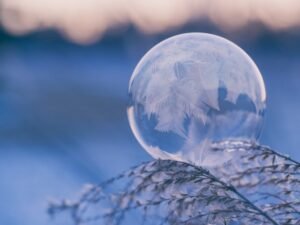Ottawa's Goldfish Invasion: How to Manage Invasive Species and Protect Ecosystems
- THE MAG POST

- 1d
- 4 min read

In Ottawa, a city pond became the stage for an unexpected drama: an invasion of goldfish. This seemingly minor event reveals a significant ecological challenge, one that tests the city's resources and the resilience of its ecosystem. The story of these fish highlights the importance of environmental stewardship, and how we must manage invasive species.
The Goldfish Enigma: An Unwanted Invasion
The saga began in March, when a city councilor received a disturbing call: thousands of lifeless goldfish marred the banks of a park pond. The city's initial response, a cleanup operation, proved inadequate. The goldfish persisted, their presence a stark reminder of the underlying issue. The subsequent discovery of approximately 1,000 live fish underscored the gravity of the situation, revealing the goldfish's remarkable ability to thrive even in the face of adversity.
The City's Response and Regulatory Hurdles
Ottawa's current strategy involves netting and euthanizing the invasive goldfish, a measure designed to prevent further ecological damage. However, regulatory constraints add complexity. Ontario's guidelines mandate euthanasia for all invasive fish captured in storm-water ponds, a reflection of the seriousness with which the province views the threat posed by non-native species. These regulations, while necessary, also highlight the intricate web of environmental management and the challenges of balancing ecological preservation with practical implementation.
The Goldfish's Resilience: A Biological Perspective
Goldfish, originally from Asia, have proven remarkably adaptable. They flourish in environments with poor water quality, making them exceedingly difficult to eradicate. Their resilience is further compounded by their rapid reproductive capabilities. A single female can produce thousands of eggs, and they can reproduce multiple times a year. This rapid proliferation, coupled with a lack of natural predators, allows them to dominate ecosystems, displacing native species and disrupting the natural order.
Ecological and Environmental Implications
The goldfish situation in Ottawa is more than a local problem; it is a microcosm of broader ecological challenges. The potential for these fish to escape into the river system poses a risk to other aquatic environments. Heavy rainfall, for instance, could provide them with an escape route, spreading the invasion downstream. This potential for widespread ecological disruption highlights the need for proactive measures and a comprehensive understanding of invasive species management.
The Source of the Problem: Human Actions
The exact origins of the goldfish population remain unknown. The prevailing theory suggests that irresponsible pet owners may have dumped their unwanted pets into the pond, an act with far-reaching consequences. This underscores the importance of responsible pet ownership and the need for public education regarding the impact of releasing non-native species into the wild. Such actions, though seemingly innocuous, can trigger significant ecological imbalances, creating long-term environmental and economic repercussions.
Challenges in Eradication: A Difficult Task
Eradicating the goldfish is a complex task. They can evade netting, and chemical treatments, while effective, pose significant risks to the overall pond ecosystem. The city's ongoing efforts underscore the challenges of dealing with invasive species once they have become established. The situation serves as a critical lesson in the importance of early detection, prevention, and the need for innovative, sustainable solutions.
The Path Forward: Prevention and Mitigation
The goldfish invasion serves as a stark reminder of the need for proactive environmental management and public awareness. The story is a call to action, emphasizing the importance of responsible pet ownership, early detection of invasive species, and the development of effective, sustainable eradication strategies. The future hinges on a multifaceted approach that combines regulatory measures, public education, and innovative solutions to address the ecological challenges posed by invasive species.
Public Awareness and Responsible Pet Ownership
Educating the public about the risks associated with releasing non-native species into the environment is paramount. This includes promoting responsible pet ownership, encouraging pet owners to return unwanted fish to pet stores, and raising awareness about the potential ecological damage caused by invasive species. By fostering a sense of responsibility and environmental stewardship, the community can play a crucial role in preventing future invasions.
Sustainable Eradication Strategies: A Long-Term Solution
Developing sustainable and environmentally friendly methods for eradicating invasive species is essential. This may involve exploring alternative control methods, such as biological control, where natural predators are introduced to manage the population. It may also involve enhancing water quality, reducing pollution, and improving habitat conditions to make the environment less hospitable to invasive species. The goal is to restore the ecological balance of the pond and prevent future invasions, ensuring that the local ecosystem remains healthy and thriving.
The Enduring Lesson: Protect Ecosystems
The Ottawa goldfish saga offers an important lesson: the need to safeguard ecosystems from invasive species. The city's experience underscores the far-reaching consequences of human actions and the importance of responsible environmental stewardship. To avoid similar situations, we must take collective action to prevent future ecological disruptions. By embracing sustainable practices, raising public awareness, and supporting comprehensive management strategies, we can protect our ecosystems and ensure their long-term health. Learning how to manage and remove invasive species is crucial for a healthy ecosystem. You will learn to manage invasive species.
Aspect | Details | Implications |
Invasive Species | Goldfish, originally from Asia, now thriving in Ottawa's ponds. | Threaten native species, disrupt ecosystem balance. |
Reproduction | Female goldfish can lay up to 6,000 eggs, reproducing multiple times a year. | Rapid population growth, making eradication difficult. |
Eradication Methods | Current methods include netting and euthanasia, chemical treatments are considered but risky. | Challenges in removing goldfish; requires consistent effort. |
Cause | Likely due to pet owners releasing goldfish into the pond. | Highlights the need for responsible pet ownership and the importance of preventing the release of unwanted pets. |




















































Comments